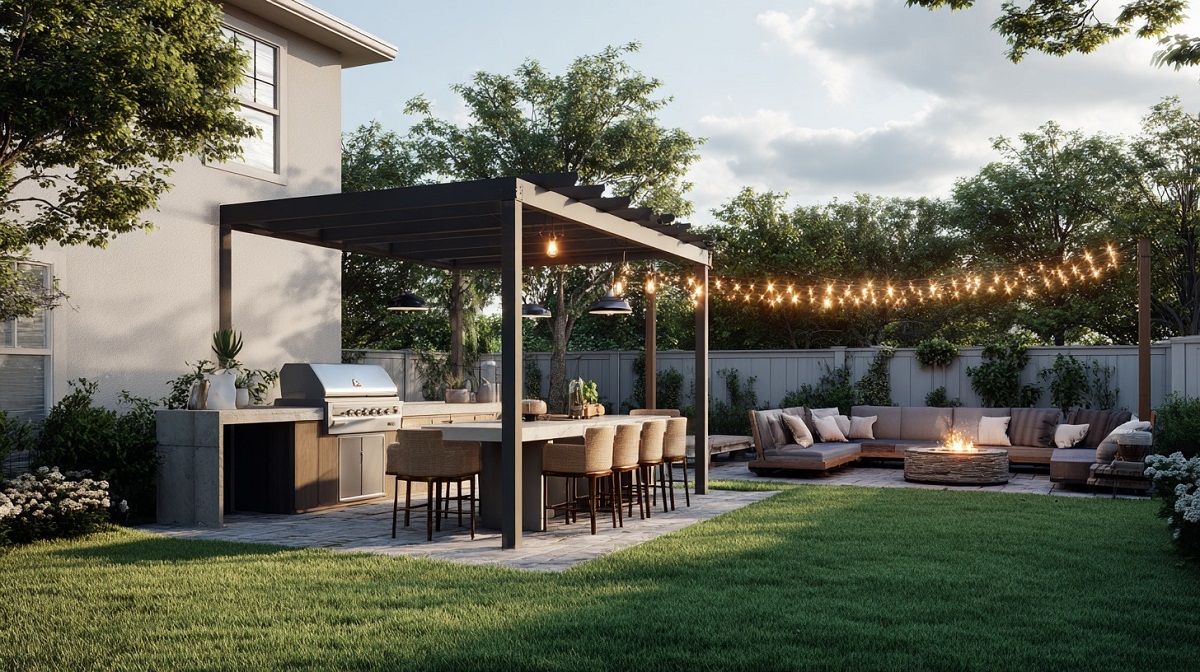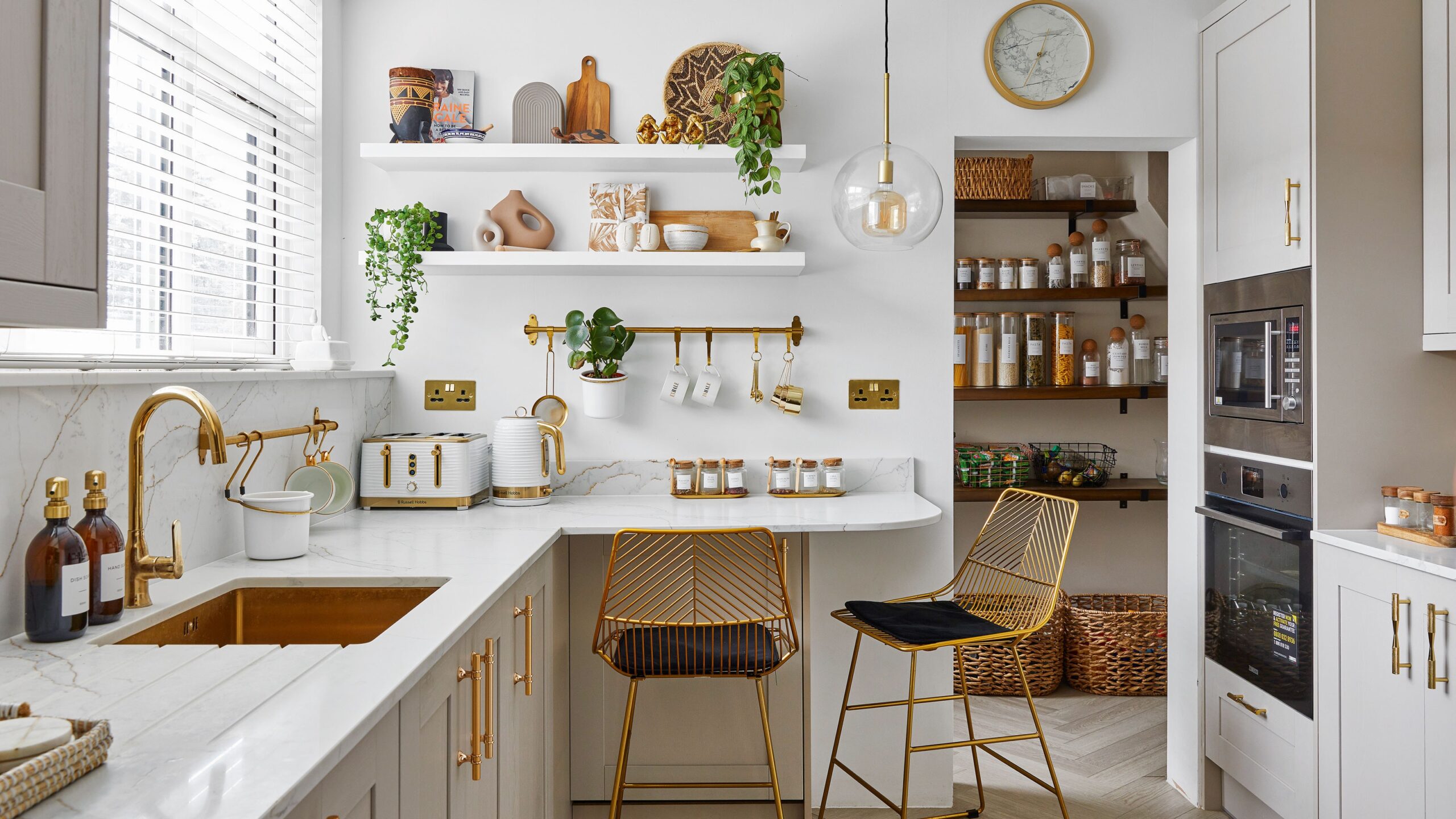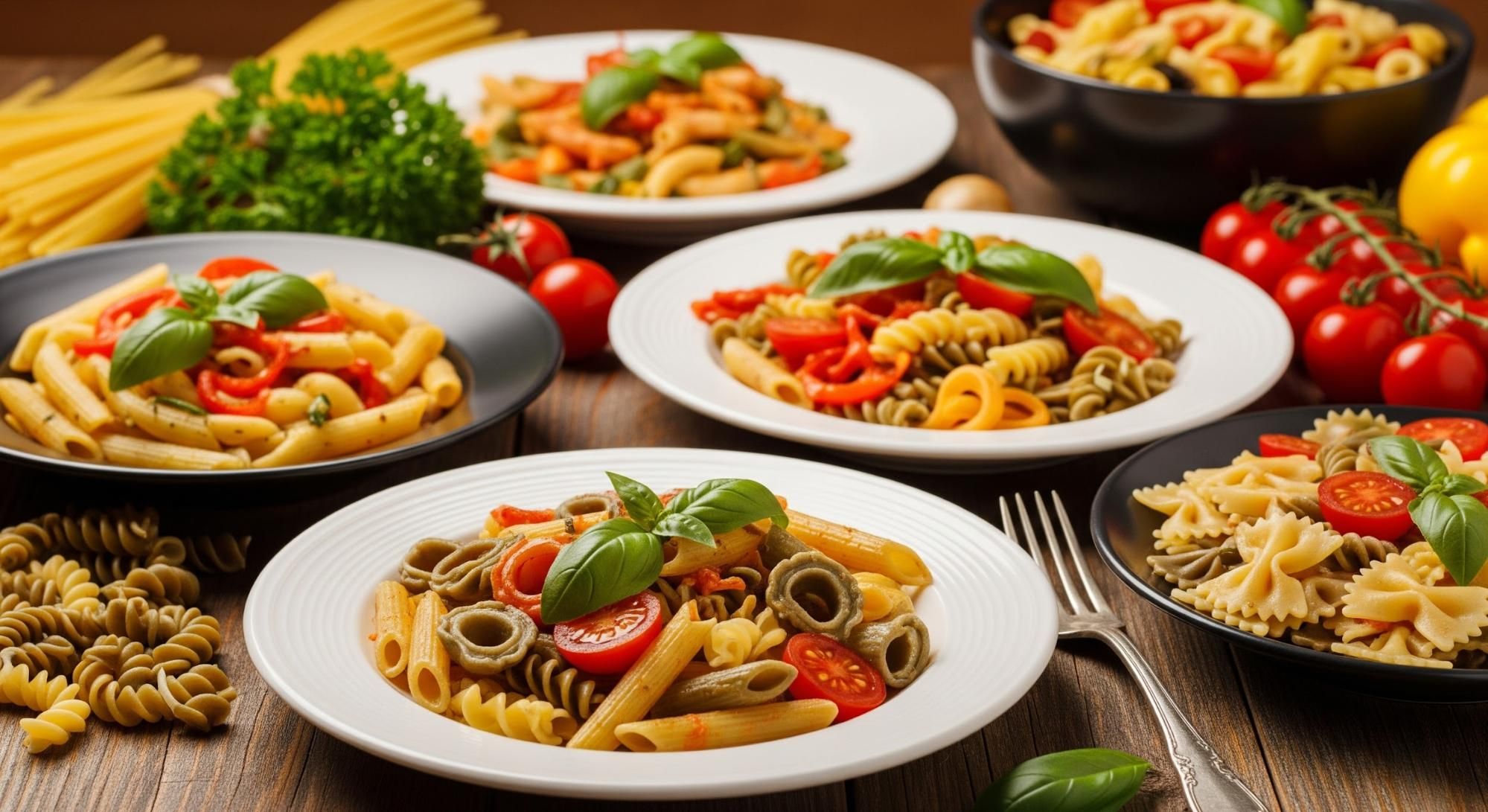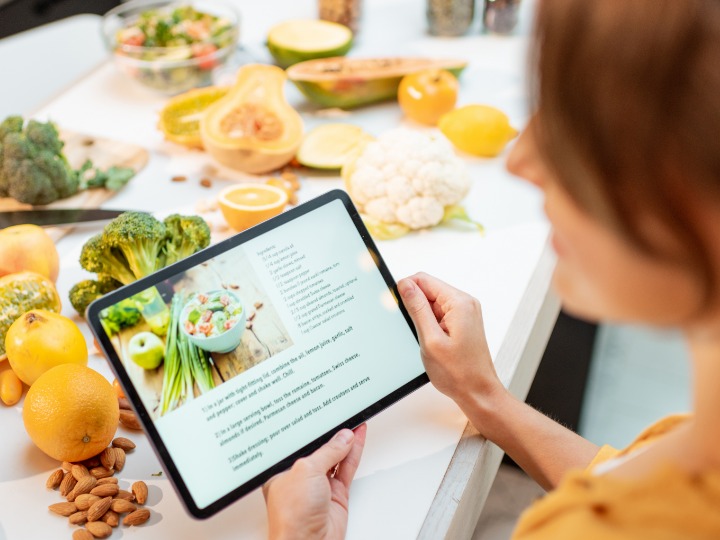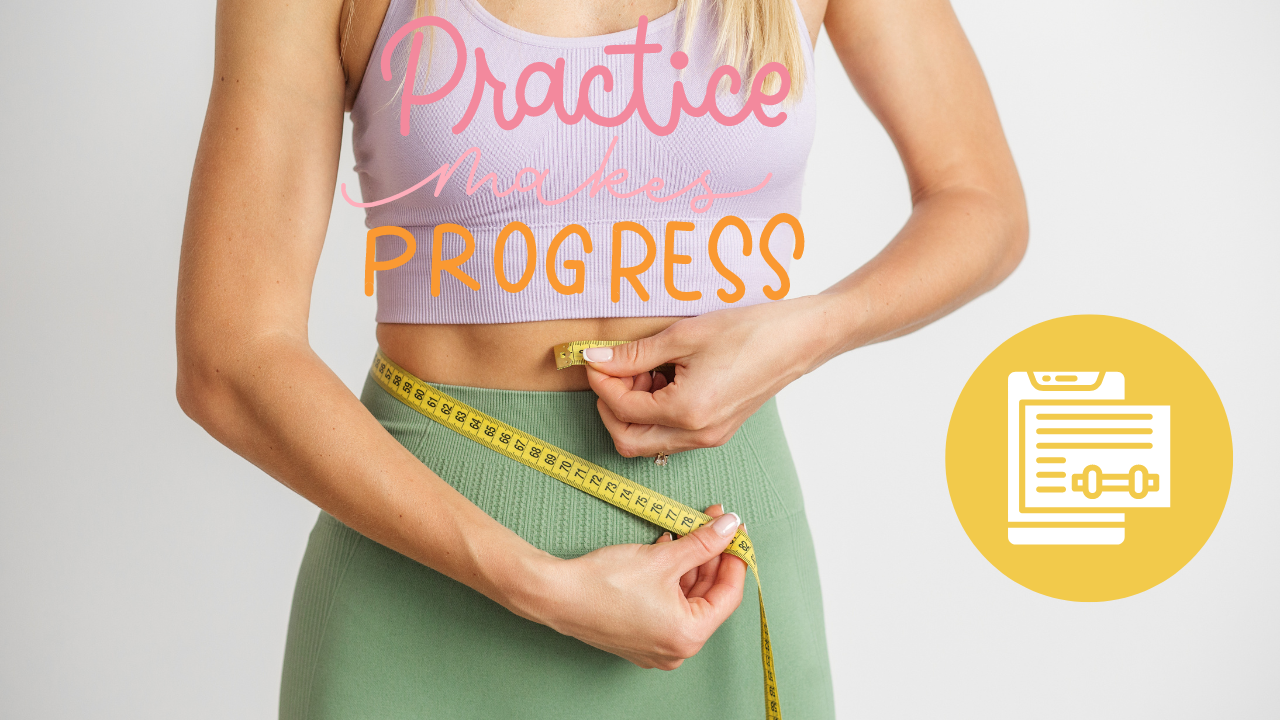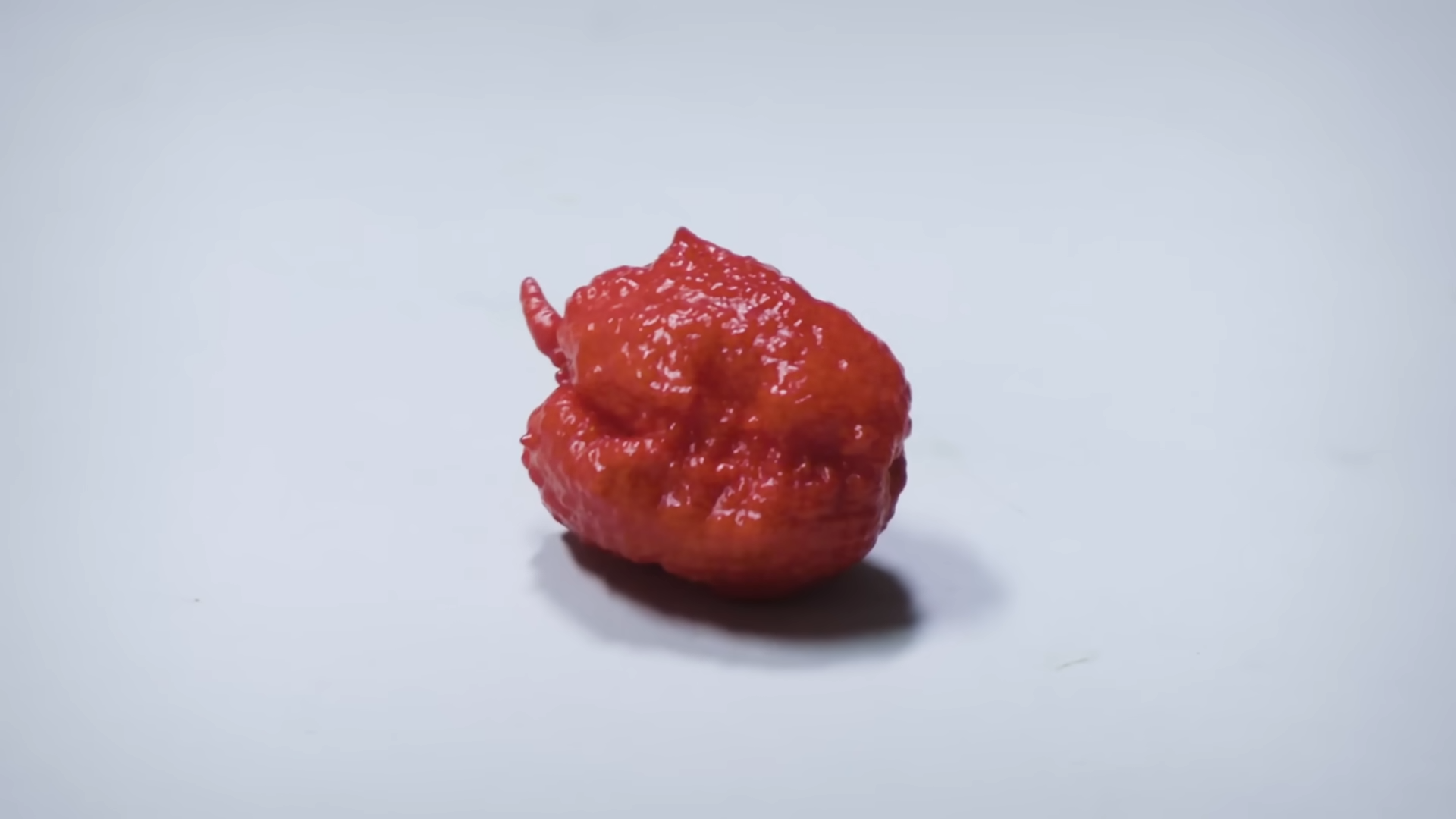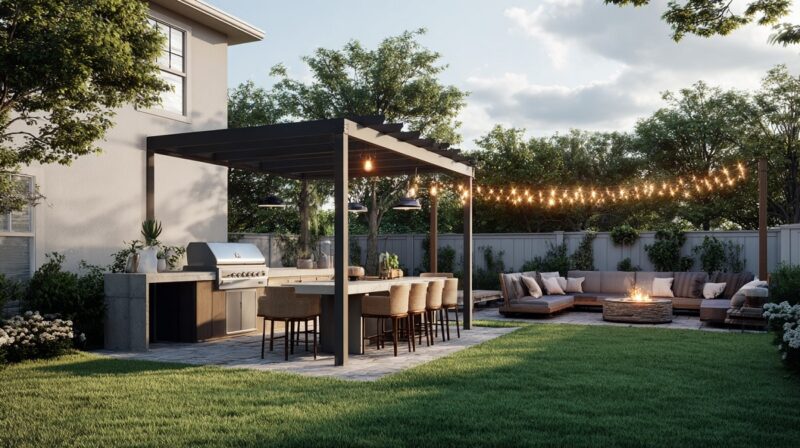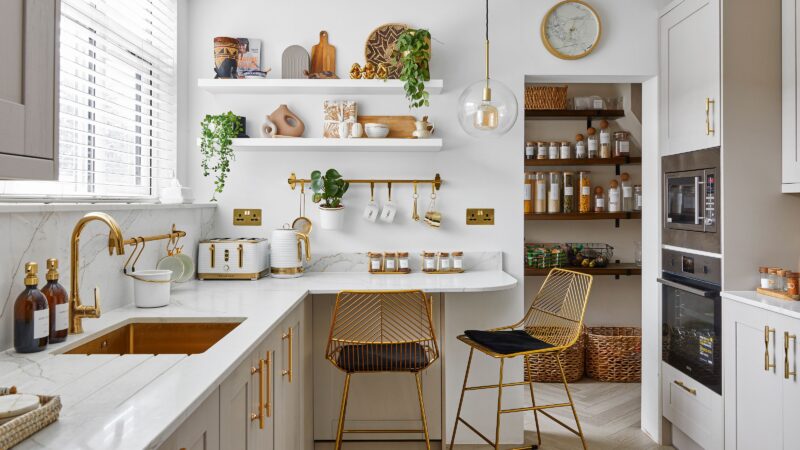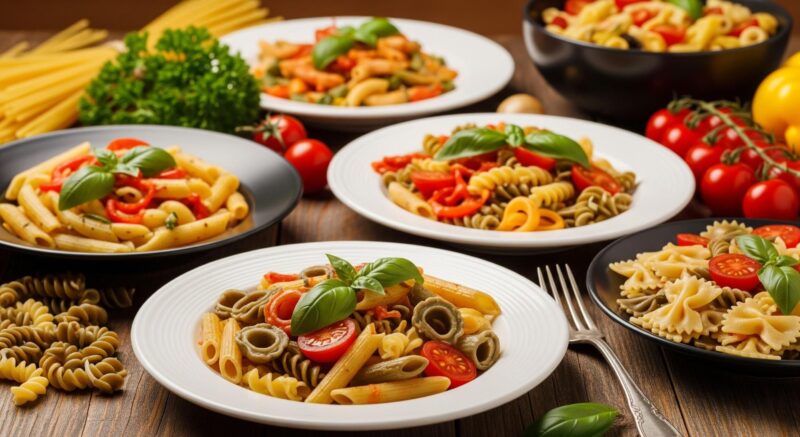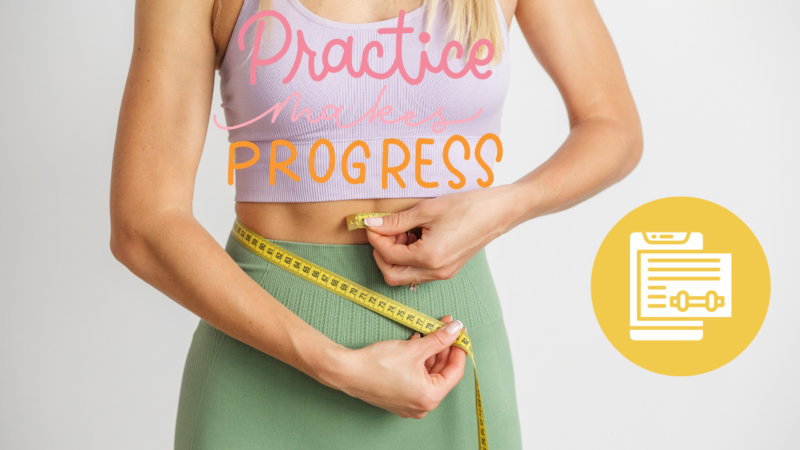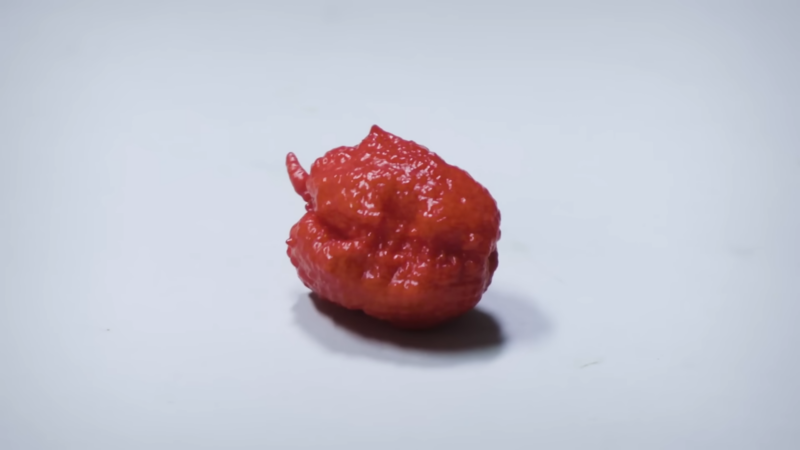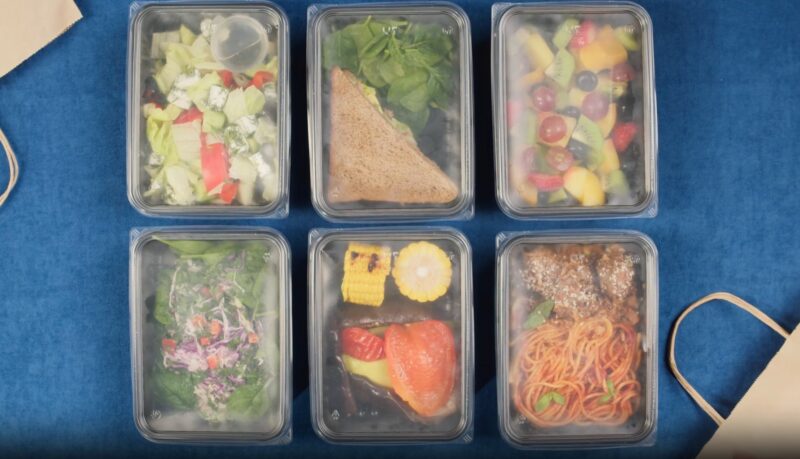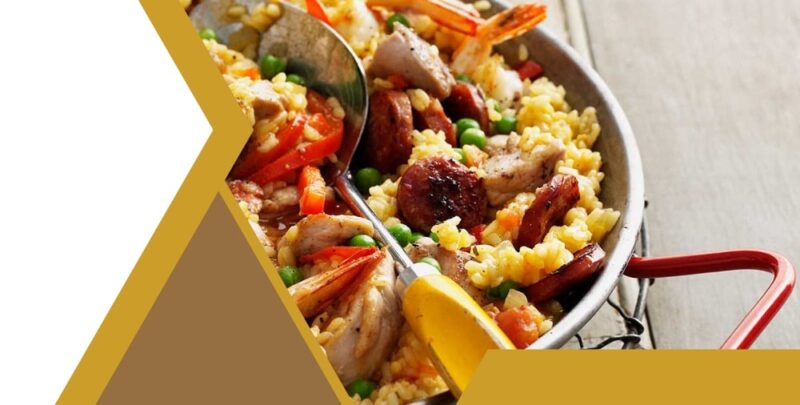
Table of Contents
ToggleThe History of Paella
Paella is a Spanish rice dish that consists of veggies and meats, often containing saffron as saffron is an abundant spice in Spain. The dish is a link between two cultures in Spain, the Romans influenced the shape of the pan, and the Arabs brought the rice and the absorption cooking method of the rice.
There is a story originating many centuries ago about how a Moor kings living in Southern Spain had servants that would make rice dishes by blending the left-overs from royal banquets in large pots to take home. The word paella originates from the Arabian phrase “baqiyah” which means left-overs. So this dish definitely has an ancient past.
Most who love a good paella will tell you of these Roman and Arabian origins. However, it’s commonly accepted this dish was born in Valencia, on the eastern Spanish coast. The local language is Valenciano, a language closely related to Catalan. Paella is a Valencian word. Most in Spain would say paellera when describing the pan. Patella (pan) is Latin, and an old French paelle is the word for frying pan. As Valenciano is closely related to French, we get the word paella.
It is commonly believed farmworkers first invented paella in Valencia for lunch. Lots of rice and leftover cuts and vegetables, all in a big frying pan for simplicity. During the 19th century, short vacations to the country regions of Spain became a popular pastime for wealthy Valencians. These wealthy Valencians were introduced to the provincial dish! Dressed up a bit with saffron and chicken instead of rabbit and eels, it soon became the classic dish that we recognize as paella Valenciana.
In no time the dish became popular and was served near the coast with seafood and became seafood paella. The most popular version is now seafood, but this is a newer creation and more upmarket as the original dish is rustic. Regardless of the version you prefer, at www.chefshat.com.au they will make sure your favorite dish is cooked in high quality cookware and pans.
What is a Paella Pan?
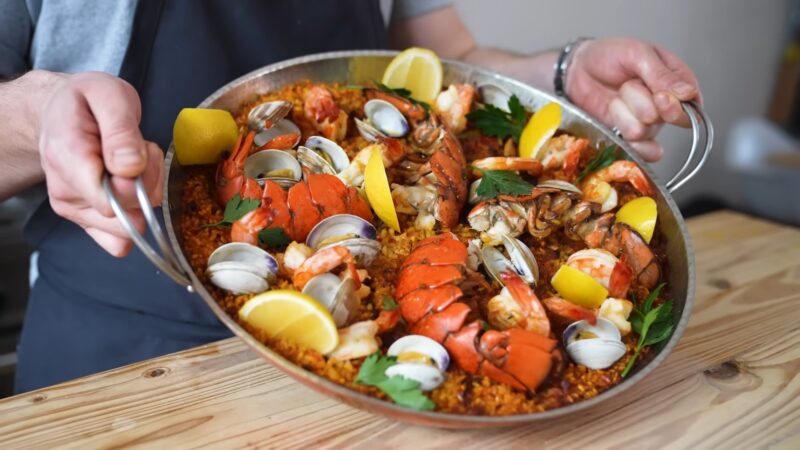
These pans are wide and shallow. They’re fashioned like this so that the pan has an even spread of heat. This allows liquid to evaporate swiftly and is how the golden-brown crust is created on the rock bottom of your rice. In my opinion, all good dishes should have this crust!
Pans are never purchased with a lid, as lids are designed for trapping moisture, and you don’t want excess moisture in your dish. These pans have wonderful heat conduction, so it is also ideal for many different purposes.
Pan Size Guide:
• four to 6 servings recommended : 16-inch pan
• 6 to 8 servings recommended: 18-inch pan
• 8 to 12 servings recommended: 22-inch pan
• 12 to twenty recommended: 26-inch pan
• 20 to forty servings recommended: 32-inch pan
Chefs Hat sells a wide range of Paella pans, and purchasing one online is affordable and straightforward. We are located near South Morgan Market if you are in Melbourne, Australia; otherwise, you can make a purchase online.
A Typical and Easy Recipe
Ingredients
• 2 cloves of garlic (chopped finely and peeled)
• 1 onion (peeled and chopped)
• 1 carrot (peeled and chopped)
• ½ a gaggle of parsley (chopped)
• 70 g best chorizo (coarsely chopped)
• 2 chicken thigh fillets (chop)
• 1/2 cup vegetable oil
• 1 teaspoon sweet smoked paprika
• 1 red capsicum or yellow (deseeded and chopped)
• 1 tablespoon tomato purée
• 1 hen inventory cube
• 300 g Long grain or Bomba rice
• 100 g frozen peas
• 200 g frozen or fresh peeled cooked prawns
• 1 lemon
Add oil into your pan on medium heat, peel the garlic, onion, carrot, chorizo, chicken and paprika, and fry for roughly five minutes, stirring regularly.
Add red capsicum and stir through the tomato purée, dissolve with the chicken stock cube, and add the rice and stir for approximately one minute.
Pour in 750ml of boiling water and add ideally freshly grinded black pepper and sea salt. However, powdered pepper and table salt will do.. Reduce down to a simmer for approximately 15 minutes, stirring regularly.
Stir all the ingredients along with the peas and prawns and then leave it on low heat and let it cook through slowly. After 30 minutes, the dish should be cooked, and the bottom should be slightly burnt.
I will stress that these pans are versatile and you are definitely not limited to just making a fantastic paella. You can easily use them as frying pans and practically cook many different dishes in one of these pans. A tip to ensure the longevity of your pan, never use a metal spoon to stir food in the pan as this may lead to scratching and permanent damage.
Risotto is a Mediterranean rice dish that is frequently confused with Paella. Both dishes use the absorption method of cooking rice, however, they are very different. Risotto needs to be constantly stirred, whereas a paella does not require constant stirring. Risotto is best made in a deep pot, and I would not recommend making risotto in a paella pan.
Finally, practice makes perfect. There are many different versions of Paella, I have mentioned Valencia and Seafood, but Squid Paella is also growing in popularity and is dark or black in colour. Also, vegan and vegetarian versions are increasing in popularity. Regardless of your choice, remember to use a Paella pan when making this dish. If you are like me, I use a large-sized pan and invite a few friends and family over on Sunday when I prepare this dish, and the pan is presented on the dinner table. It has a certain appeal and a wow factor. It makes great table conversation and is served best with a nice glass of wine or two.
Types of Paella – Seafood, Squid, Vegetarian, and Vegan
Paella is a versatile dish that can be made with a variety of ingredients. Here are some popular types of paella:
- Seafood paella – made with seafood such as shrimp, mussels, clams, and squid, along with vegetables like bell peppers, onions, and tomatoes.
- Squid paella – a variation of seafood paella that includes squid and its ink, giving the dish a unique black color.
- Vegetarian paella – made with vegetables such as artichokes, peppers, zucchini, and tomatoes, along with beans, and sometimes mushrooms.
- Vegan paella – similar to vegetarian paella but made without any animal products, such as using vegetable broth instead of chicken broth.
Regardless of the type of paella, the key is to use high-quality ingredients and a good paella pan.
Now it is time to add some chopped parsley. Serve with lemon wedges, and ENJOY!!
Tips for Cooking the Perfect Paella
Here are some tips for cooking the perfect paella:
- Use the right rice: Use short-grain rice, such as Bomba or Calasparra, which can absorb a lot of liquid without becoming mushy.
- Use a good quality broth: A flavorful broth is essential for a delicious paella. You can use chicken, seafood, or vegetable broth, depending on the type of paella you are making.
- Use a paella pan: A wide and shallow paella pan is essential for even cooking and the formation of the coveted socarrat, or the crispy golden crust on the bottom of the pan.
- Heat the pan properly: Heat the pan slowly and evenly over medium heat. You want the heat to be evenly distributed across the pan, so the rice cooks evenly.
- Sauté the ingredients: Sauté the vegetables and proteins separately in the paella pan before adding the rice. This will ensure that each ingredient is cooked properly.
- Add the rice and broth: Once the ingredients are sautéed, add the rice and broth to the pan. Stir the rice gently, making sure it is evenly distributed across the pan.
- Don’t stir too much: Unlike risotto, you don’t need to stir paella constantly. In fact, stirring too much can break the grains of rice and result in a mushy paella. Instead, let the rice cook and absorb the broth without stirring too much.
- Add the seafood last: If you are making a seafood paella, add the seafood to the pan during the last few minutes of cooking. This will prevent the seafood from overcooking and becoming tough.
- Let it rest: Once the paella is cooked, remove it from the heat and let it rest for a few minutes. This will allow the rice to absorb any remaining liquid and for the socarrat to form.
- Serve with lemon wedges: Paella is traditionally served with lemon wedges, which add a bright, acidic note to the dish. Squeeze a bit of lemon juice over the paella before serving to enhance the flavors.
Common Mistakes to Avoid When Making Paella
- Using the wrong type of rice: It’s important to use short-grain or medium-grain rice, specifically Valencia or Calasparra rice, as it can absorb more liquid and maintain its shape and texture during cooking.
- Overcrowding the pan: Overcrowding the pan can lead to uneven cooking and prevent the rice from developing a crispy bottom layer.
- Adding too much liquid: Adding too much liquid can make the rice mushy, so it’s important to use the correct ratio of rice to liquid and let the liquid fully absorb before adding more.
- Not properly seasoning the dish: Paella relies on seasoning for flavor, so make sure to use enough salt and spices like saffron, paprika, and garlic.
- Overcooking the seafood: Seafood can become rubbery and tough if overcooked, so it’s important to add it at the right time and cook it just until it’s opaque and fully cooked.
- Stirring the rice too much: Paella is traditionally cooked without constant stirring, as this allows for the development of the coveted socarrat, or crispy bottom layer.
- Using the wrong type of pan: A wide, shallow pan with even heat distribution is necessary for making paella, as it allows for the rice to cook evenly and the socarrat to form.
By avoiding these common mistakes, you can ensure that your paella turns out perfectly cooked and full of flavor.
FAQ
1. Can paella be reheated?
Yes, paella can be reheated, but it’s important to reheat it properly to maintain its texture and flavor. The best way to reheat paella is to use a stovetop or oven. Add a bit of broth or water to the paella to help steam and rehydrate the rice. Heat the paella over medium-low heat or in a 350°F oven until it’s warmed through. Avoid using a microwave, as it can make the rice mushy and unevenly heated.
2. Can paella be frozen?
Yes, paella can be frozen, but it’s important to freeze it properly to maintain its quality. Let the paella cool completely before transferring it to a freezer-safe container. Freeze the paella for up to 3 months. To thaw, transfer the container to the refrigerator and let it thaw overnight. Reheat the paella as described in the previous answer.
3. Can paella be made without a paella pan?
While a paella pan is ideal for making paella, it’s possible to make paella without one. You can use a wide and shallow skillet or a Dutch oven instead. Just make sure the pan has an even heat distribution and enough surface area for the rice to cook evenly.
4. Can paella be made in advance?
Yes, paella can be made in advance, but it’s best to serve it immediately after cooking for the best texture and flavor. If you need to make paella ahead of time, you can cook the rice and vegetables separately and store them in the refrigerator. When you’re ready to serve, reheat the rice and vegetables in a paella pan, add the broth and proteins, and cook as usual.
5. What is the best wine to pair with paella?
The best wine to pair with paella depends on the type of paella you’re making. For seafood paella, a crisp white wine like Albariño or Verdejo pairs well. For meat-based paella, a medium-bodied red like Tempranillo or Garnacha is a good choice. Rosé is also a versatile option that pairs well with a variety of paella types.
6. Can paella be made without saffron?
Saffron is an essential ingredient in traditional paella, but if you don’t have access to saffron or don’t want to use it, you can substitute with turmeric or paprika. Keep in mind that the flavor and color of the paella will be different without saffron.
Conclusion
Paella is a delicious and versatile dish with a rich history and many variations. Using the right ingredients, such as short-grain rice and flavorful broth, and a good paella pan with even heat distribution is key to making the perfect paella. By avoiding common mistakes, such as overcrowding the pan or overcooking seafood, you can create a flavorful and crispy paella that is sure to impres
Related Posts:
- The History of Pork Schnitzel: From Austria to Your Plate
- 15 Best Grill Pans 2023 - Redefine Your BBQ Experience
- Do K-Cups Go Bad and Expire? - Best Before Date and Storage
- Coffee & Tea Culture and Tradition - Where They…
- How to Reheat Biscuits the Right Way? - For Crispy,…
- Peerless Two Handle Kitchen Faucet – A Mix of…

